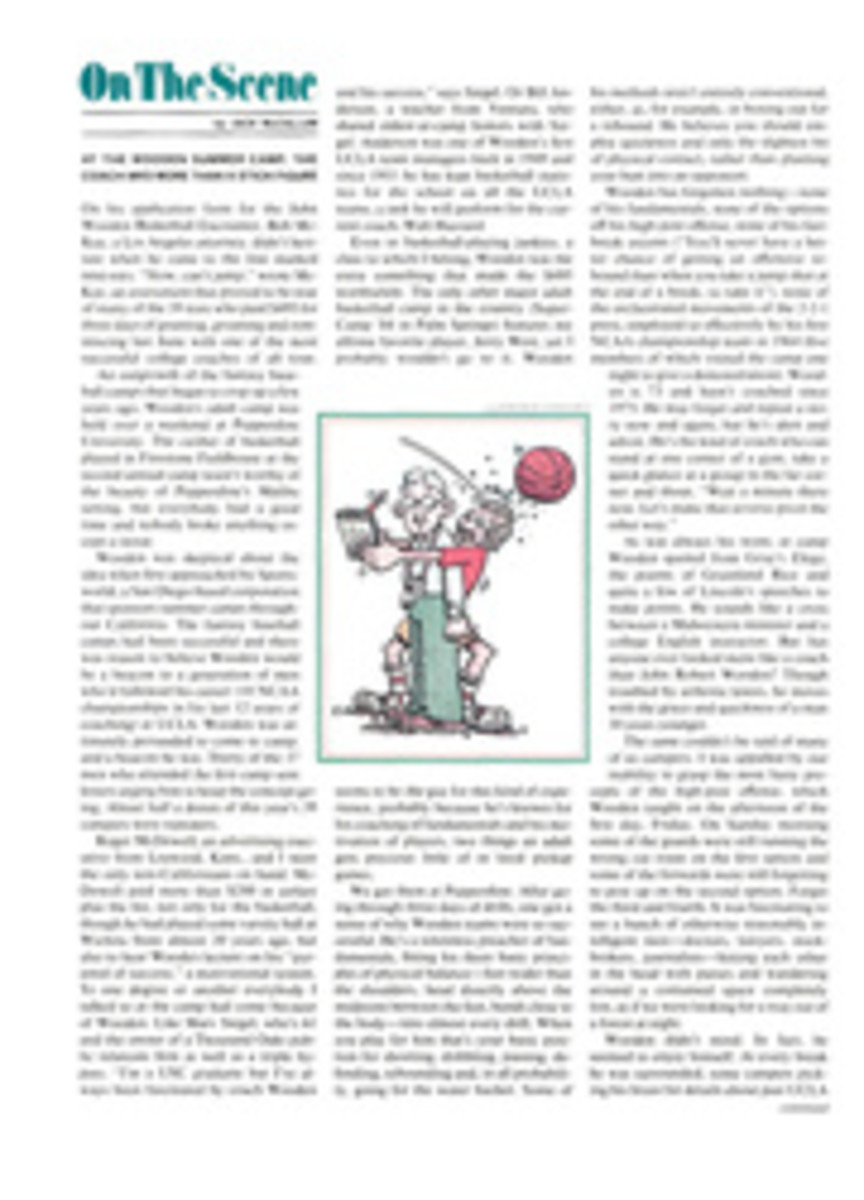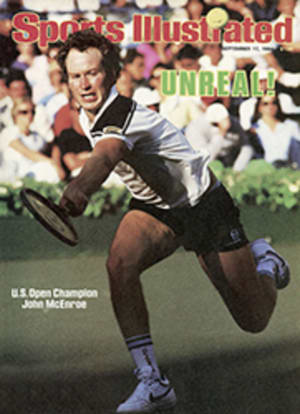
It's the home of the homer
Yankee catcher Butch Wynegar playfully threw knuckleballs last Friday afternoon at Fenway Park, while seriously wondering how to pitch to the Red Sox. Boston has five hitters with 20 or more homers—major league leader Tony Armas (36 at the end of last week), Dwight Evans (27), Jim Rice (25), Mike Easier (22) and Rich Gedman (20). "There's no way," Wynegar said sadly, "to pitch around all of them."
But as the Red Sox discovered, there's also no way to pitch around the Yankees' Don Baylor (26 homers), Don Mattingly (20) and Dave Winfield (18); Baylor's two-run, ninth-inning clout on Friday decided the game 4-2.
Home runs have decided a lot of American League games this year because a lot of American Leaguers are hitting home runs. The White Sox can trot out Ron Kittle (28 homers), Harold Baines (24) and Greg Walker (23); the Tigers have Lance Parrish (29), Kirk Gibson (25) and Chet Lemon (18); the Blue Jays offer George Bell (22), Willie Upshaw (19) and Lloyd Moseby (18); the Angels feature Fred Lynn (20), Reggie Jackson (19), Brian Downing (19), Doug DeCinces (17) and Bobby Grich (16). Rarely have so many AL parks looked like boom-boom rooms.
And rarely have so many National League stadiums resembled Death Valley. At week's end the 14-team AL led the 12-team NL in homers (1,739 to 1,143) and homers per game (1.75 to 1.33). Because of its smaller parks, two additional teams and the DH, the American League is supposed to be the home-run league. But only once in the DH-expansion era has the AL enjoyed anything comparable to its current leads in total taters (52% more) and homers per game (31% more). This has happened even though Milwaukee, first in the league with 216 homers in 1982, is currently last with 83.
Twenty-four American Leaguers have 20 or more homers; only 11 National Leaguers have hit that many. Every AL team has at least one player with at least 14 homers; Houston and St. Louis have none. Major league leaders Detroit (162) and Boston (156) hit 12 homers in a single doubleheader, and five AL teams have more homers than NL leader Philadelphia's 133. You think that's embarrassing for the Nationals? At his current pace, Atlanta's Dale Murphy, who has 31 homers, will finish with 35, the lowest total over a full season by a National League champion since Pittsburgh's Ralph Kiner hit 23 in 1946.
When informed of this power gap, players have been surprised or bemused. "To tell you the truth, I hadn't noticed it, but that's very interesting," says Toronto's Buck Martinez. "The ball parks in the American League are much more suited to home runs," says San Francisco's Duane Kuiper, a former Indian. "I'm a perfect example of that. I hit one over there and none here."
Having taken his long ball from the Mets to the A's, Dave Kingman (34 homers) alone has tipped the balance a percentage point or two. The National League's more consistent pitching has further limited its homer output. "Almost every game, you face a good starter for the first six innings, then a top reliever followed by a bullpen ace," says Philly's Mike Schmidt. After hitting an average of 42 homers the last four full seasons, and a high of 48 in '80, Schmidt has only 30 for '84. "There are more good, young pitchers—Gooden, Darling, Hershiser, Tibbs," adds San Diego's Steve Garvey, "and some of them throw sinkers, a key to preventing homers." The senior circuit also has a number of injured or slumping veterans. George Hen-drick (nine homers), Bill Madlock (four), Bob Horner (three) and Dickie Thon (none) are out for the season; Pedro Guerrero (11 homers) and ailing Andre Dawson (15) are having disappointing years. The loss of Atlanta's Horner (161 homers in 2,571 career at bats) has been especially telling. His replacements have been Randy Johnson (five homers in 412 at bats) and Ken Oberkfell (12 in 2,508).
And where are the fresh recruits from those vaunted NL farm systems? Fact is, the American League has been producing young sluggers to go with its established veterans, while the Nationals have chugged along with much the same old cast. On the one hand we have National Leaguers Murphy and Schmidt, competing in the home-run derby as they did back in 1980; on the other, American Leaguers like Minnesota's Tom Brunansky and Oakland's Dwayne Murphy (29 homers apiece) are exceeding their career highs, while Seattle's Ken Phelps hits a homer every 11.1 at bats. The AL has nine players 25 and under with at least 20 homers, while the NL has three.
"It just goes in cycles," says Atlanta's Murphy. "You'll see us hitting more homers in the future." Maybe they will, but only one player in the entire Braves' farm system has hit more than 15 this season (Miguel Sosa, with two teams). Also, the Nationals no longer can hide behind that adage about beating 'em with doubles and triples. The AL's top 10 in extra-base hits range from Evans's 67 to Upshaw's 55; the NL's from Ryne Sand-berg's 66 to Darryl Strawberry's 42.
There's no more instantaneous, gratifying and glamorous act in baseball than the homer. "You try to win games any way you can," says Baylor, "but the homer is especially satisfying because everything has to be perfect. Your swing has to be right. Your head has to be down." While National League games were being won and lost by less dramatic means last week, four different AL games were decided by homers in the ninth or an extra inning, including two by Baylor. That's entertainment.
Also last week, Winfield hit his 100th homer as a Yankee, Grich his 200th, Rice his 300th, and Jackson chased his 500th. That so many Nationals are down while so many Americans are up defies simple analysis: It's an anomaly. Perhaps, aptly, Homer himself envisioned all this when he said: "These things surely lie on the knees of the gods."
[originallink:10632751:43437]
PHOTO
The BopSox: Gedman (20 homers), Rice (25), Evans (27), Armas (36) and Easier (22).

